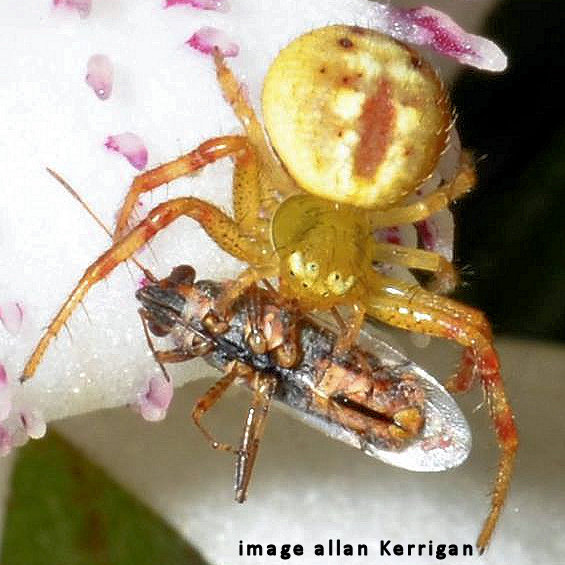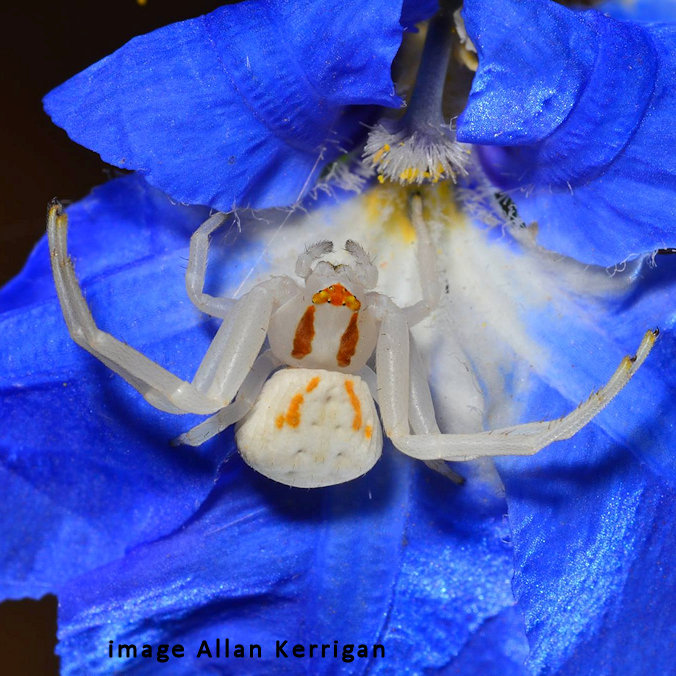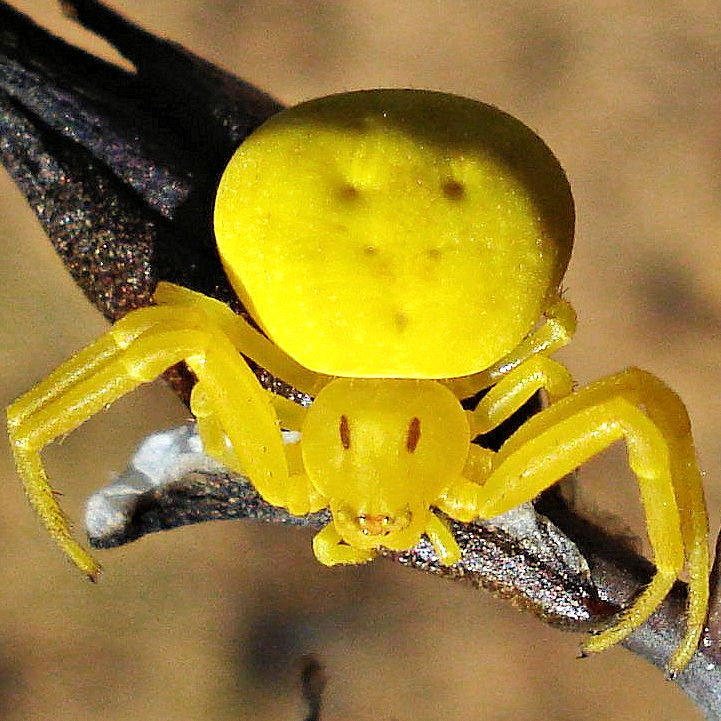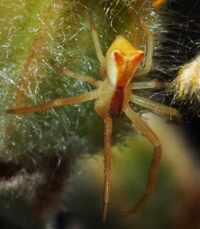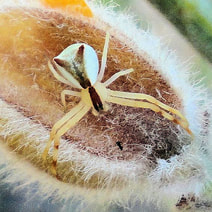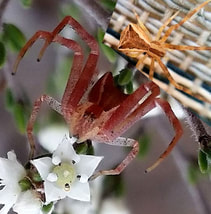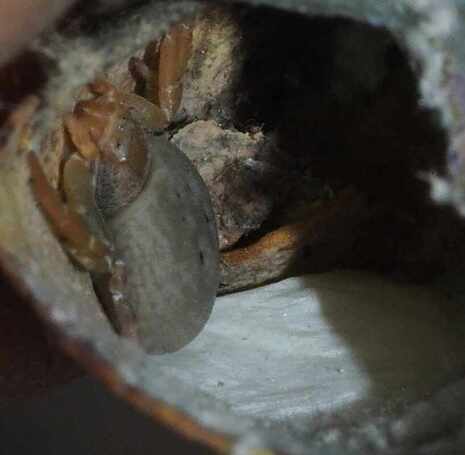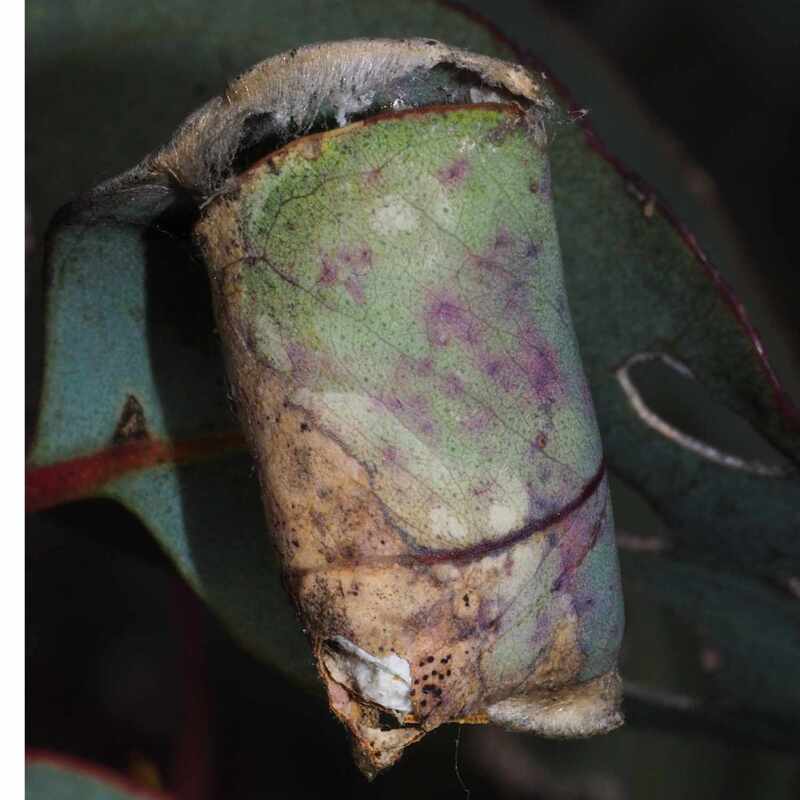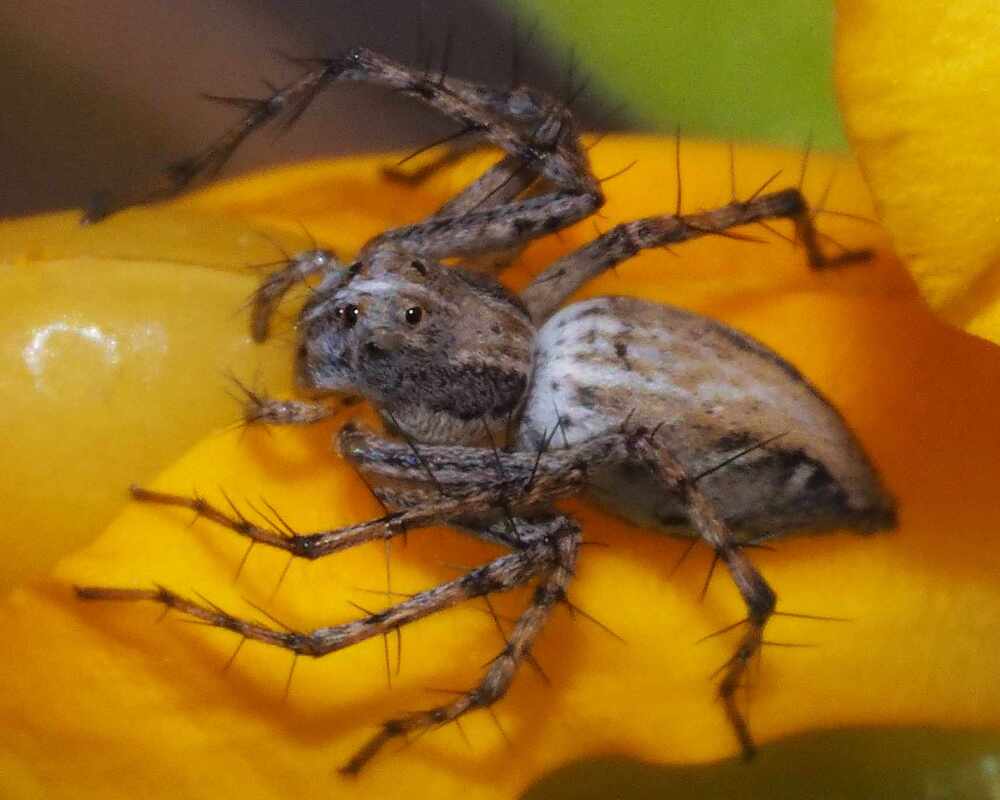Crab spiders, also known as flower spiders (Thomisidae family), are daytime ambush hunters with laterigrade legs, capable of moving sideways like a crab. The front two legs, that are often larger and stronger than the other six, are held sideways, ready to immediately catch their prey, that can be up to three times their size . Eyes are in two rows of four on low stalks that can move independently. Lateral eyes are often larger. At night they rest and lay their eggs in silken sacs.
Spiders below are typical crab spiders from the sub-family Thomisidae that can often change colour.
Spiders below are typical crab spiders from the sub-family Thomisidae that can often change colour.
Crab spiders from the sub-family Stephanopinae genus Sidymella have a triangular abdomen that is truncated at the back.
This Cymbacha species crab spider is rather plain. It spends much of its time in a retreat it makes from a curled up leaf
An exception is the genus Tmarus that has elongated spiders that hunt on stems and twigs rather than flowers. This one has lost four legs
